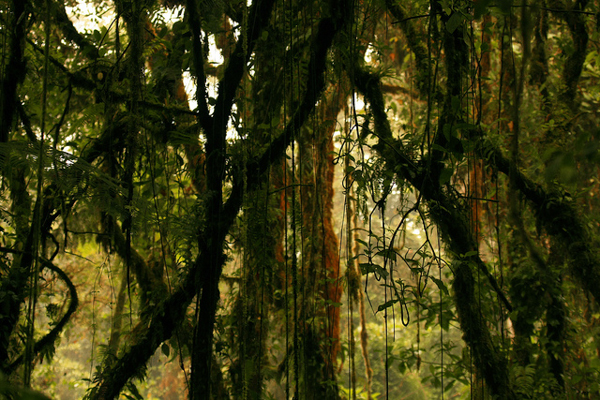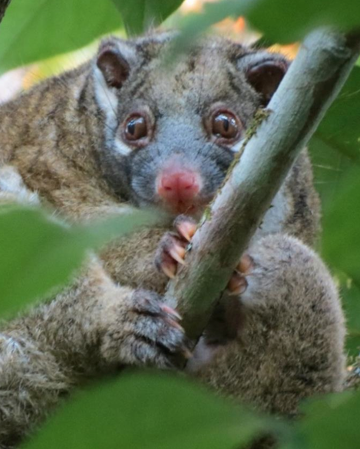 Lianas, climbing woody vines, can harm rainforest trees, particularly young saplings. Credit: Alex eflon.
Lianas, climbing woody vines, can harm rainforest trees, particularly young saplings. Credit: Alex eflon.
Since the 1970s, research into climbing woody vines called lianas has focused primarily on the harm they inflict on rainforest trees. Studies have shown that lianas can kill trees outright and limit the nutrients and water they can access, so foresters restoring destroyed rainforest tracts usually exclude the vines from new tree plantings. But a new paper shows lianas in a different light, suggesting that if they are judiciously planted, they might help, rather than hinder, rainforest recovery.
The paper, an opinion piece published in mongabay.com’s open-access journal Tropical Conservation Science, examines the potential benefits of planting lianas in rainforest restoration projects. For example, lianas produce leaves prolifically, which is one of the reasons they are able to overgrow trees and outcompete them for access to light. But the authors argue that this characteristic might make lianas a good source of soil nutrients since the leaves fall quickly and deteriorate on the forest floor. Planting fast-growing lianas around the edge of a young restoration planting might "seal" it from invading weeds that can’t tolerate shade. And their habit of growing between trees may lessen wind damage and help arboreal animals move into and through new forests.
“Complete exclusion of all liana species from restoration plantings in response to the potential threat that individual species or climbing guilds display ignores the now equally abundant fact that some lianas, under certain conditions, can support considerable biodiversity, assist in regulating forest microclimate, and are invaluable in forest wide processes," the authors write.
 A green ring tail possum (Pseudochirops archeri), one of many animals that use lianas to make their way through rainforest canopies. Credit: Mason Campbell. |
The paper also points out that lianas themselves are richly diverse and many species are locally threatened as further reasons to consider including them in restoration plantings.
But there is more research to do. The authors call for the experimental planting of select liana species to address fourteen questions that would need to be answered before the vines should be used in restoration projects.
Anything that might help restoration projects succeed should be considered. “As primary rainforests throughout the world continue to be deforested and degraded, maximising the efficiency and effectiveness of rainforest restoration techniques is becoming increasingly essential for the long-term sustainability of this ecosystem and its constituent biota,” the authors conclude.
Citations:
- Campbell, M.J., Edwards, W., Odell, E., Mohandass, D., and Laurance, W.F. (2015). Can lianas assist in rainforest restoration?. Mongabay.com Open Access Journal – Tropical Conservation Science Vol. 8 (1): 257-273.
}}